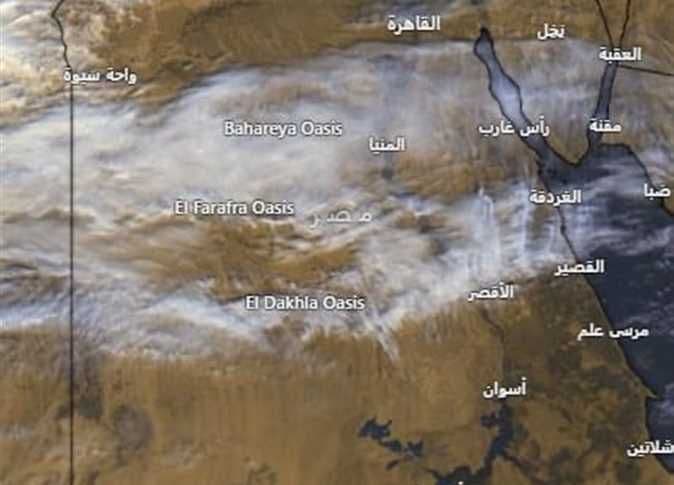From Scorching Peaks to Shifting Skies: Navigating the Dynamics of Extreme Temperatures
Demystify extreme heat. Explore why temperatures feel hotter, how low-pressure systems offer relief, and essential tips for staying safe amidst fluctuating weather patterns.

The Deceptive Degrees: Understanding "Felt" vs. "Real" Heat
When meteorologists report daily temperatures, they often quote the ambient air temperature, measured in the shade. Yet, anyone who has stepped outside on a scorching summer day knows that the number on the thermometer doesn't always tell the full story of how hot it truly feels. This crucial distinction between 'real' and 'felt' heat is vital for understanding our comfort and safety. Factors like humidity, direct sun exposure, and wind speed significantly influence how our bodies perceive temperature. For instance, while might register a high of 41 degrees Celsius, the combination of stagnant air and high humidity can make it feel closer to an oppressive 42 or 43 degrees. Further south, regions like , with an actual high of 49 degrees, can feel even more intense, with the 'felt' temperature pushing well beyond that mark, nearing 50 degrees. Even when a forecast mentions a slight chance of light rain or scattered thunderstorms, as is the case for parts of , the Northwest Coast, and , these brief reprieves rarely diminish the overall sensation of extreme heat. This 'felt' temperature is a more accurate indicator of the physiological stress our bodies endure, making it a critical metric for public health warnings and personal precautions.

Under the Furnace: The Anatomy and Impact of Heatwaves
A heatwave isn't just a hot day; it's a prolonged period of excessively hot weather, often accompanied by high humidity, that can have significant impacts on human health and infrastructure. The current conditions exemplify this, with the peak of the heatwave pushing temperatures to their limits, particularly in southern regions. While experiences intensely hot and stable conditions, often with intermittent winds, the real furnace is in , where temperatures in the shade hit 46 degrees Celsius, but the 'felt' temperature can soar to an astonishing 49 degrees. Such extreme conditions place immense strain on the human body, increasing the risk of heatstroke, dehydration, and exhaustion. The air itself can feel thick and suffocating, making even simple outdoor activities hazardous. This isn't merely about discomfort; it's a serious public health concern that demands immediate behavioral adjustments. Understanding the anatomy of such a heatwave – its duration, intensity, and the factors contributing to the 'felt' heat – is the first step in mitigating its dangers.

Shifting Winds: How Atmospheric Dynamics Bring Relief
Just as a heatwave builds through a specific set of atmospheric conditions, its eventual breaking is often orchestrated by another powerful meteorological force: a low-pressure system. After days of relentless heat, the forecast brings welcome news: a significant drop in temperatures, signaling the end of the current heatwave. This change is directly attributed to the approach of a low-pressure system, which typically ushers in cooler air masses and often brings with it increased cloud cover and precipitation. For instance, temperatures in are expected to fall to a more manageable 37 degrees Celsius by Saturday, returning to seasonal averages by Sunday and Monday. Simultaneously, the same atmospheric dynamics that bring this relief can also manifest as localized, intense weather. Current satellite imagery indicates continued formation of thunderclouds over central and southern and parts of the , potentially leading to moderate to heavy rainfall and even flash floods in mountainous areas. This dynamic interplay of high and low-pressure systems underscores the constant ebb and flow of our atmosphere, where extreme conditions are eventually mitigated by shifting weather patterns.
Resilience in the Inferno: Practical Survival Tips
Navigating periods of extreme heat requires proactive measures and a keen awareness of one's body. When temperatures soar and the 'felt' heat becomes unbearable, simple adjustments to daily routines can make a significant difference in staying safe and comfortable. Foremost among expert recommendations is to actively avoid direct sun exposure, particularly during the hottest parts of the day. Seek shade whenever possible, and if you must be outdoors, wear a wide-brimmed, light-colored hat to protect your head from the sun's intense rays. Hydration is paramount; drink copious amounts of water throughout the day, even if you don't feel thirsty, to help your body regulate its temperature. Steer clear of poorly ventilated rooms where heat can accumulate and become trapped. Additionally, adjusting your diet by avoiding heavy, spicy foods can lessen the metabolic heat load on your body. These aren't just suggestions; they are vital strategies for maintaining health and preventing heat-related illnesses, empowering individuals to build resilience against the immediate dangers of the inferno.
Beyond the Forecast: Living with a Warming World
While understanding daily forecasts and immediate survival tips is crucial, the recurring intensity of heatwaves, with 'felt' temperatures consistently pushing extreme limits, beckons us to look beyond the short-term. The phrase 'August on a hot plate' paints a stark picture of a future where such severe heat becomes more common. This isn't just about a single heatwave; it's a symptom of broader atmospheric trends linked to a warming world. As global temperatures rise, we can anticipate more frequent, longer-lasting, and more intense heat events. This necessitates a fundamental shift in how societies and individuals adapt. Beyond personal hydration and seeking shade, it calls for urban planning that prioritizes green spaces and reflective surfaces, infrastructure resilient to extreme heat, and public health systems equipped to manage heat-related emergencies. Living with a warming world means integrating these insights into our long-term strategies, fostering a deeper understanding of atmospheric dynamics, and building collective resilience to ensure safety and comfort in an increasingly volatile climate.
Related Articles

Rewriting the Rhythms: When Extreme Heat Becomes the New Normal

Rewriting the Rhythms: When Extreme Heat Becomes the New Normal

The Hidden Heat: Unmasking Egypt's Humid Summer and Adapting to the 'Felt' Reality

The Hidden Heat: Unmasking Egypt's Humid Summer and Adapting to the 'Felt' Reality

The Unseen Fire: Why Egypt's Summer 2025 Feels More Intense Than the Numbers Say

The Unseen Fire: Why Egypt's Summer 2025 Feels More Intense Than the Numbers Say

Decoding the Feels-Like Factor: When the Forecast Lies to Your Skin
